Hailing from the cultural heart of West Sumatra, Indonesia, Padang cuisine is an extraordinary journey into culinary artistry. Infused with the spirit of the Minangkabau people, it unfolds as a celebration of rich and diverse flavors. What sets Padang apart is the simultaneous presentation of an aromatic ensemble, showcasing a range of tastes that dance between sweet, sour, and savory notes. The intricate use of coconut milk, fiery chilies, and an orchestra of complex spices unveils a culinary tapestry that transcends borders. Padang's global influence paints it as a canvas of exceptional and cherished culinary experiences from the heart of Indonesia.
Soto
-1703852916.jpg)
Soto is a traditional Indonesian soup that is diverse in its regional variations. It typically consists of a broth enriched with aromatic herbs and spices, often featuring turmeric, galangal, lemongrass, and lime leaves. The base is complemented with meat, commonly chicken, beef, or goat, and sometimes includes vegetables such as bean sprouts, cabbage, or tomatoes. Soto is often served with rice and garnished with toppings like fried shallots, lime wedges, and sambal (chili paste). Different regions in Indonesia have their own unique twists on soto, leading to a wide array of flavor profiles and ingredients. Soto is not only a beloved comfort food but also a reflection of the rich culinary diversity found throughout the archipelago.
Satay
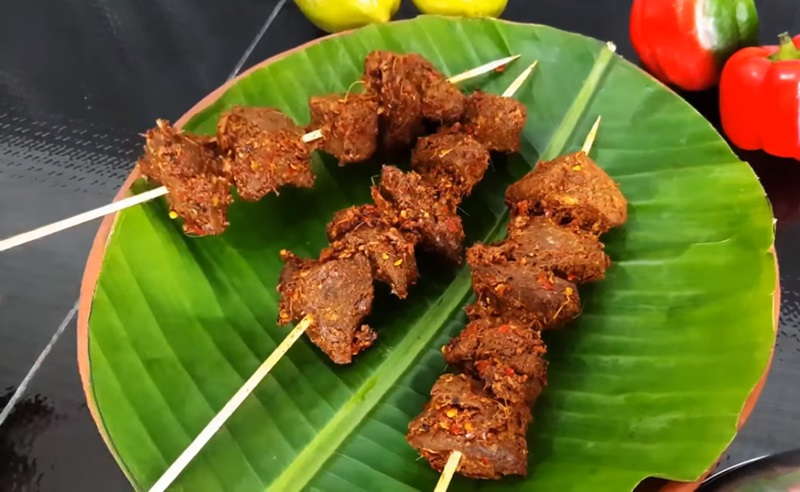
Padang cuisine, renowned for its diverse offerings and bold flavors, features one of its cherished delights – Satay. This traditional Indonesian dish involves skewered, grilled meat paired with a delectable peanut sauce. Predominantly crafted with beef in Padang, although variations with chicken or lamb are also embraced, the beef Satay undergoes marination in a blend of spices such as garlic, ginger, turmeric, and coriander, imparting a distinct and aromatic character. The charcoal grilling process contributes a smoky and subtly charred essence to the skewered meat. Accompanying the Satay is a lavish serving of thick and creamy peanut sauce, created by grinding roasted peanuts and infusing spices like chili, garlic, and tamarind. The marriage of tender, succulent grilled beef with the richness of the nutty peanut sauce achieves a harmonious symphony of flavors. Typically relished with steamed rice and complemented by pickled cucumbers and onions, this combination introduces a refreshing counterpoint to the savory and spicy ensemble. In essence, Padang cuisine's Satay stands as a gratifying and mouthwatering testament to the intricate and robust tastes embedded in Indonesian culinary traditions.
Rendang
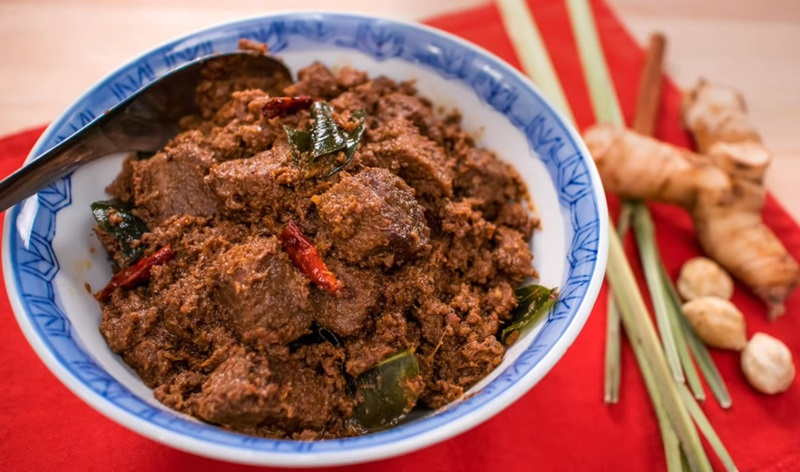
Rendang is a popular dish in Padang cuisine. It is a slow-cooked, flavorful meat dish that is known for its rich and aromatic taste. The dish is traditionally made with beef, although variations with chicken, lamb, or even vegetables also exist. To prepare Rendang, the meat is first marinated in a blend of spices, including ginger, galangal, lemongrass, garlic, shallots, and a variety of aromatic herbs. The marinated meat is then slow-cooked in coconut milk and a mixture of spices, such as turmeric, coriander, and chili, until the liquid evaporates and the meat absorbs all the flavors, resulting in a thick, dark, and intensely flavored sauce. The slow cooking process allows the meat to become tender and infuses it with the rich flavors of the spices and coconut milk.
Roti Canai

Roti canai, a beloved dish within Padang cuisine with roots in Malaysia, stands out as a popular flatbread paired traditionally with curry sauce or dal. Crafted from a blend of flour, water, and ghee, the dough achieves a soft and flaky texture. The preparation involves a meticulous process of stretching, folding, and layering the dough before cooking it on a hot griddle. This technique results in a crispy exterior that encases a tender interior, creating a delightful texture. Served hot, roti canai is a favored choice for breakfast or as a snack. The accompaniment of various curry sauces, such as chicken, beef, or vegetable curry, enhances the experience. The marriage of the flavorful curry with the soft and buttery roti yields a delicious and satisfying meal. Complementary additions like pickles or chutneys provide an additional tangy dimension. In essence, roti canai, with its versatile nature, embodies a cherished and adaptable gem in Padang cuisine, promising a delightful fusion of textures and flavors to satiate diverse palates.
Murtabak
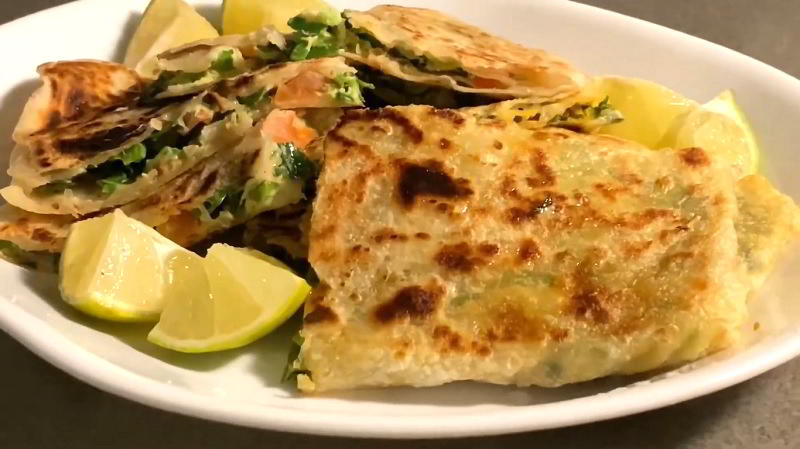
Murtabak, a popular dish in Padang cuisine, is a savory pancake-like dish that is filled with a mixture of minced meat, onions, and spices. The dough is made with flour, water, and sometimes eggs, creating a soft and slightly chewy texture. The filling of murtabak varies, but it commonly includes beef, chicken, or mutton, mixed with diced onions, garlic, and a blend of aromatic spices such as cumin, coriander, and turmeric. This flavorful mixture is cooked until the meat is tender and the spices have infused the filling. To prepare murtabak, the dough is rolled out thin and the filling is spread evenly on one side. The dough is then folded over to enclose the filling, forming a rectangular or triangular shape. The murtabak is then cooked on a griddle until it turns golden brown and crispy on the outside. Murtabak is commonly served with a side of tangy and spicy dipping sauce, such as sambal or peanut sauce. It is a satisfying and hearty dish that is often enjoyed as a snack or a main course.
Nasi Padang
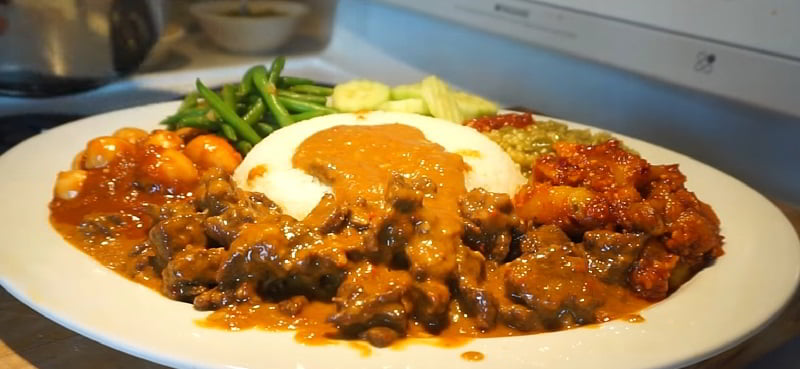
Nasi Padang is a traditional Indonesian dish that originates from West Sumatra. It is known for its rich and flavorful taste, as well as its wide variety of dishes that are served with steamed rice. Nasi Padang is typically served in a communal style, where a selection of dishes is presented on the table and diners can choose what they want to eat. The main component of Nasi Padang is the steamed rice, which is fragrant and fluffy. It is usually served with a variety of side dishes, such as rendang (slow-cooked beef in coconut milk and spices), gulai ayam (chicken curry), sambal balado (spicy chili paste), and sayur lodeh (vegetable curry). These dishes are cooked with a combination of aromatic spices, such as turmeric, ginger, lemongrass, and chili, which give them their distinct and bold flavors. Nasi Padang is known for its richness and spiciness, making it a favorite among those who enjoy bold flavors. It is also a versatile dish, as it can be enjoyed for lunch or dinner. Whether you prefer meat or vegetables, Nasi Padang offers a wide range of options to satisfy your taste buds.
Balado
-1705586914.jpg)
Balado, a fiery bumbu (spice mixture), is a prominent element in the Padang cuisine and has proliferated throughout Indonesia and Malaysia, particularly in Negeri Sembilan. This distinctive sauce is concocted by sautéing ground red hot chili pepper with an array of spices, including tomato, garlic, kaffir lime, and shallot, in coconut or palm oil. The ingredients share similarities with sambal hot chili paste, but Balado diverges by being seamlessly integrated and stir-fried with the main components, serving as a featured dish rather than a separate condiment. Versatile in its applications, Balado elevates the flavors of fish (whole or cutlets), fried boiled eggs, fried prawns, squid, beef, and chicken, as well as eggplant or potatoes, showcasing its adaptability in enhancing a variety of culinary delights.
Gulai
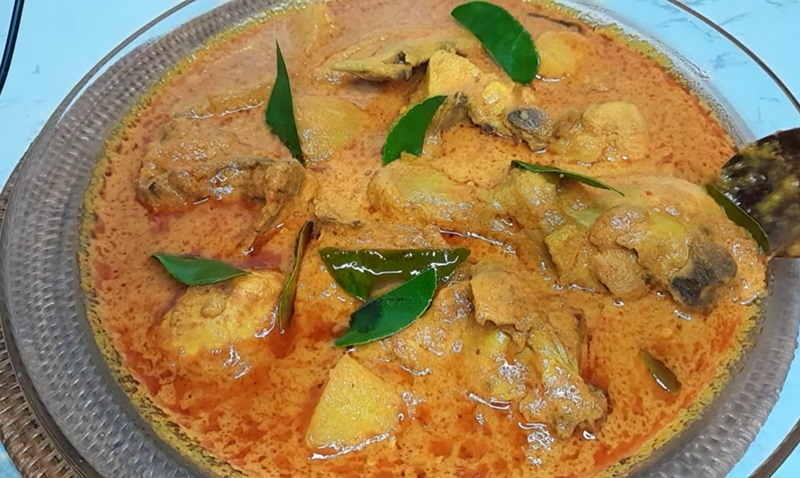
Padang cuisine stands out for its robust and enticing flavors, with Gulai being a cherished gem in this culinary tradition. Gulai is a savory and aromatic dish resembling a rich curry. Its preparation involves simmering diverse ingredients in a harmonious blend of coconut milk and an assortment of spices, creating an irresistibly flavorful concoction. The key protein in Gulai, whether beef, chicken, or fish, is meticulously cooked until tender, absorbing the nuances of the spiced coconut milk. A symphony of aromatic spices, including turmeric, ginger, galangal, and lemongrass, contributes to Gulai's distinct and intricate flavor profile. Typically enjoyed with steamed rice or as an accompaniment to other Padang delights like rendang or sambal, Gulai showcases a visually appealing vibrant yellow hue and a creamy texture. This dish, with its amalgamation of rich flavors and aromatic spices, takes center stage in Padang cuisine. Whether you prefer meat or seafood, Gulai promises to gratify your palate with its hearty and satisfying essence.
Asam Pedas
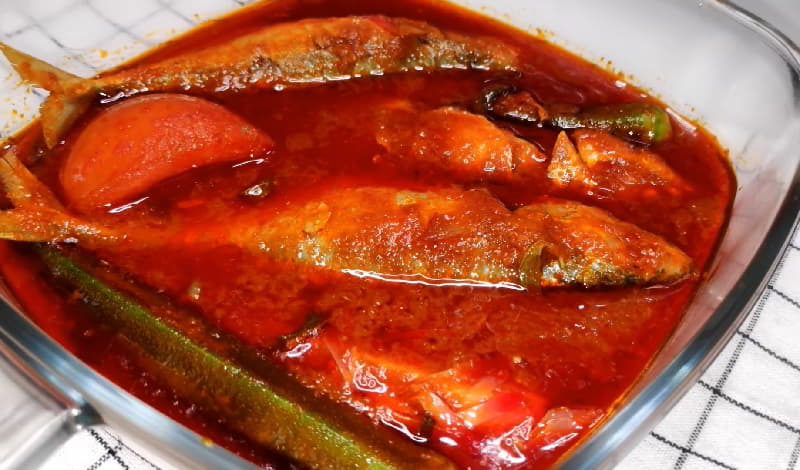
Asam pedas is a spicy and sour dish that is a part of the Padang cuisine. The name itself translates to "sour spicy" in English, which perfectly describes the taste profile of this dish. To prepare asam pedas, a variety of ingredients are used, including fish, shrimp, or chicken. The protein is cooked in a spicy broth made with tamarind paste, chili peppers, turmeric, and other aromatic spices. The combination of these ingredients creates a complex and tangy flavor that is both refreshing and fiery. What sets asam pedas apart from other spicy dishes is the balance of flavors. The sourness from the tamarind adds a tangy kick, while the spiciness from the chili peppers provides a fiery heat. The dish is often served with steamed rice, which helps to mellow out the flavors and provides a satisfying meal.
Lemang
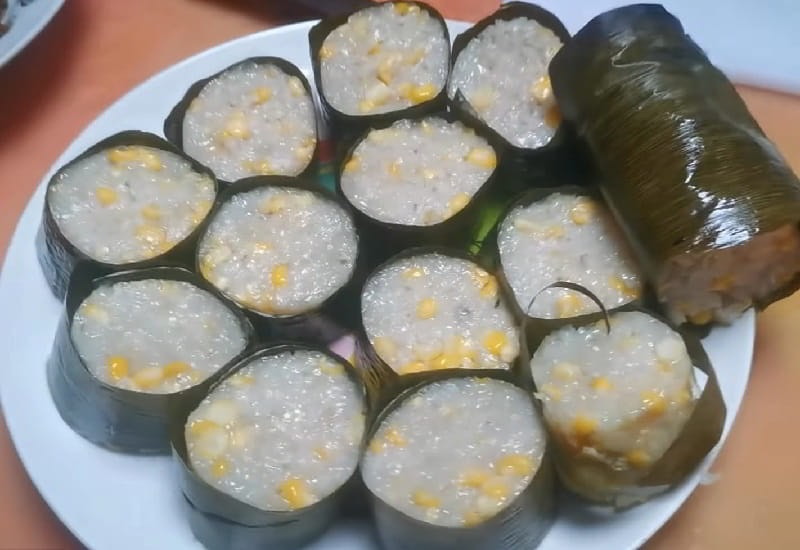
Lemang is a traditional dish from the Padang cuisine in Indonesia. It is a unique and flavorful dish that is made from sticky rice, coconut milk, and pandan leaves. Lemang is traditionally cooked in bamboo tubes, which gives it a distinct smoky flavor. The process of making Lemang starts with soaking the sticky rice overnight and then mixing it with coconut milk and salt. The mixture is then stuffed into bamboo tubes, which are sealed with banana leaves to prevent any leakage. The bamboo tubes are then placed over a fire and cooked for several hours until the rice is fully cooked and has absorbed all the flavors from the coconut milk and pandan leaves. The end result is a delicious and fragrant Lemang, with a slightly chewy texture and a subtle sweetness from the coconut milk. It is often served as a side dish or as a main course, accompanied by other traditional Padang dishes like rendang or sambal. Lemang is especially popular during festive occasions or celebrations, where it is enjoyed by people of all ages.
Krupuk Kulit
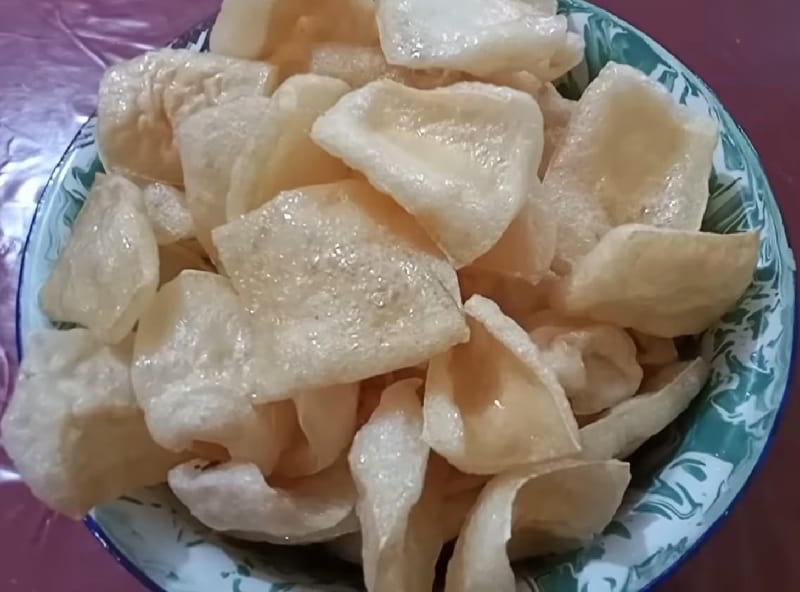
Krupuk kulit, a renowned dish within Padang cuisine originating from West Sumatra's city of Padang, Indonesia, is a savory and crisp delicacy crafted from cow skin. Distinguishing itself from the more conventional krupuk made from shrimp or fish, krupuk kulit offers a unique twist to this traditional snack. The preparation involves cleaning and boiling the cow skin until tender, followed by slicing it into thin strips and sun-drying until achieving a hardened, brittle state. These dried strips are then deep-fried in hot oil until they puff up and acquire a luscious golden brown hue. The outcome is a crunchy and flavorful snack, often savored as a side dish or accompaniment to main meals. Krupuk kulit is cherished for its robust, meaty essence, complemented by a subtle smokiness imparted during the frying process. Its satisfying crunch makes it a popular choice, frequently served alongside a spicy chili sauce or sambal for an additional kick. A beloved favorite among both locals and visitors, krupuk kulit stands as an integral part of the dynamic culinary panorama in Padang.
Dendeng
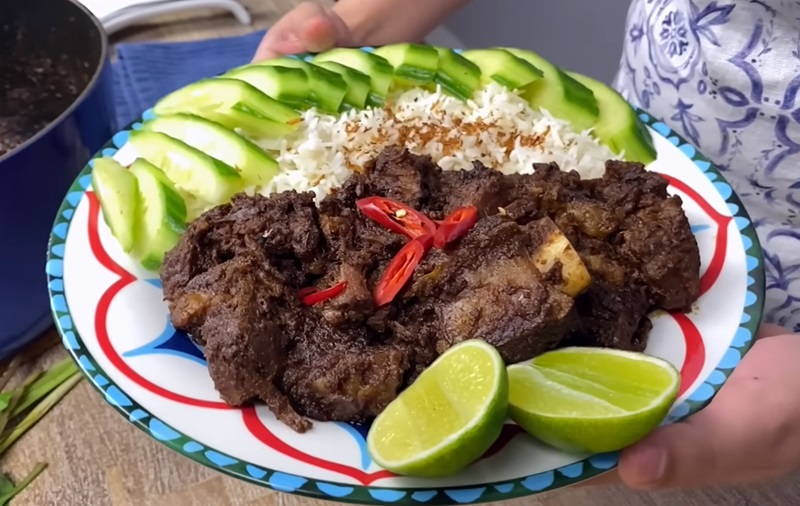
Dendeng, a classic Indonesian dish, features thinly sliced meat that undergoes marination and drying to attain a chewy, savory texture. Typically using beef, though variations may include chicken or fish, Dendeng starts with marinating the meat in a blend of spices like garlic, ginger, chili, and coriander. Following the marination, the meat is sun-dried or gently oven-dried at low temperatures until achieving a tender, crispy consistency. This drying method not only preserves the meat but also enhances its flavors. Once prepared, Dendeng is commonly served as a side dish or snack, often accompanied by steamed rice and an array of sambal or chili sauces. The interplay of flavorful meat, aromatic spices, and subtle spiciness delivers a mouthwatering experience that proves both satisfying and irresistible. Dendeng stands as an authentic representation of Padang cuisine, reflecting the region's penchant for bold flavors and culinary expertise. Whether relished as a snack or a main course, this delectable dish promises to captivate the taste buds of those fortunate enough to indulge in its culinary allure.
Roti Jala

Roti Jala, a culinary gem within Padang cuisine originating from the Indonesian province of West Sumatra, presents a delightful pancake made from a batter featuring flour, eggs, coconut milk, and turmeric for its vibrant yellow hue. The batter, poured through a distinctive funnel-like utensil with multiple small holes, forms an intricate lace-like pattern on a hot skillet. Typically paired with various savory curries or spicy sambal, Roti Jala's thin and soft texture harmonizes seamlessly with the robust flavors of the curries, providing an ideal canvas to absorb the delectable sauces. The dish is often adorned with shredded coconut or fried onions, contributing both texture and flavor. Beyond its culinary appeal, Roti Jala becomes a visual feast with its intricate pancake patterns. While it is a popular choice for special occasions or festive celebrations in Padang, its comforting and unique combination of flavors and textures makes it equally enjoyable as a year-round treat. Roti Jala stands out as a standout dish, showcasing the culinary excellence of Padang cuisine.
Sate Padang
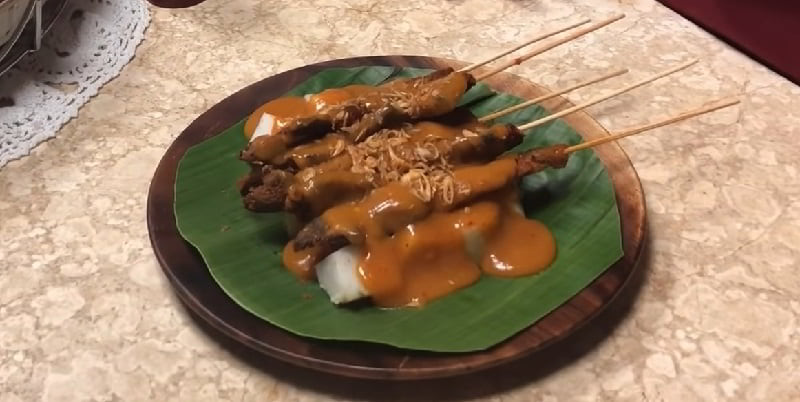
Sate Padang, commonly known as Padang satay, features small cubes of beef adorned with a flavorful spicy sauce. Its defining characteristic lies in the robust yellow sauce crafted from a mixture of beef and offal broth, turmeric, rice flour, ginger, curry powder, garlic, cumin, galangal root, coriander, and salt. The preparation involves boiling fresh beef twice in a sizable drum of water, ensuring tenderness. The sliced meat is then seasoned, and the broth becomes the foundation for the intricate sauce, incorporating 19 carefully blended spices and a variety of chilies. All the seasonings are harmoniously cooked for 15 minutes. Just before serving, the satay is expertly grilled using coconut shell charcoal, adding a final touch to this exquisite Indonesian dish.
Nasi Kapau
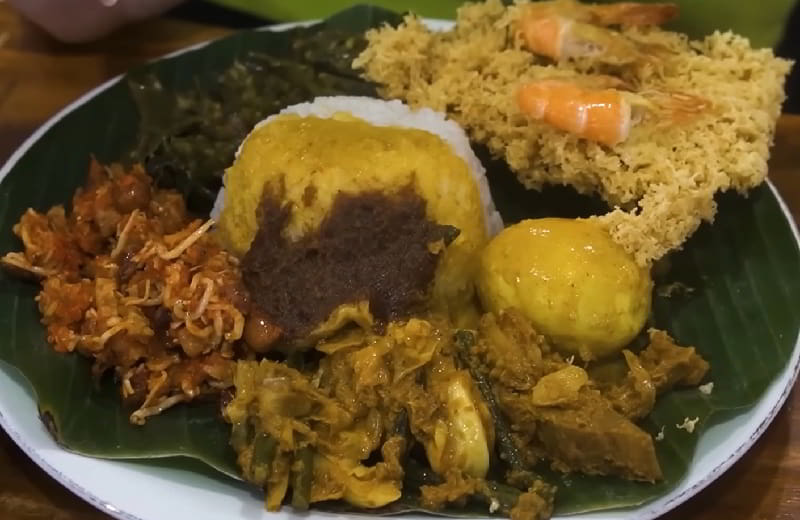
Nasi kapau is a renowned traditional dish from West Sumatra, Indonesia. This flavorful dish is a combination of rice served with various side dishes, creating a symphony of tastes and textures. The star of nasi kapau is the rice itself, which is cooked with rich coconut milk and pandan leaves, giving it a fragrant aroma. The rice is then topped with an array of mouthwatering side dishes, such as rendang (spicy slow-cooked beef), dendeng balado (spicy beef jerky), ayam pop (crispy fried chicken), and gulai daun singkong (cassava leaves in a spicy coconut curry). These side dishes are made with a variety of spices, including turmeric, ginger, lemongrass, and chili, resulting in a harmonious blend of flavors. Each bite offers a burst of spiciness, sweetness, and savory goodness. Nasi kapau is typically served on a banana leaf, adding an earthy touch to the dining experience.
Daun Ubi Tumbuk
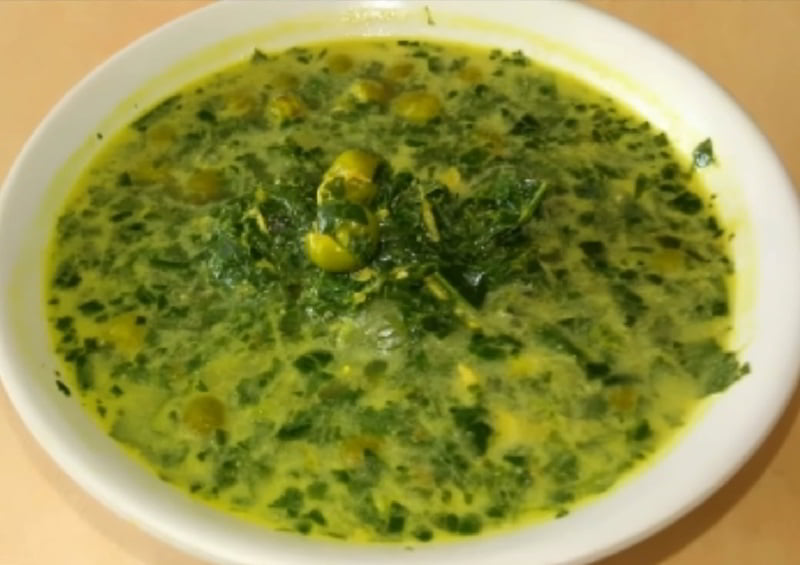
Daun ubi tumbuk is a traditional dish from Padang cuisine. This unique dish showcases the culinary creativity and rich flavors of the region. Daun ubi tumbuk translates to "mashed cassava leaves" in English. The dish is made by boiling cassava leaves until they are tender and then mashing them into a paste-like consistency. The mashed leaves are then mixed with various herbs and spices such as garlic, shallots, chili, and turmeric, which give the dish its aromatic and flavorful profile. The combination of the tender and flavorful mashed cassava leaves with the spicy and savory accompaniments creates a harmonious and satisfying meal. Daun ubi tumbuk is not only delicious but also nutritious, as cassava leaves are a good source of vitamins and minerals. This traditional Padang dish is a testament to the rich culinary heritage and diverse flavors of Indonesian cuisine.
Udang Balado
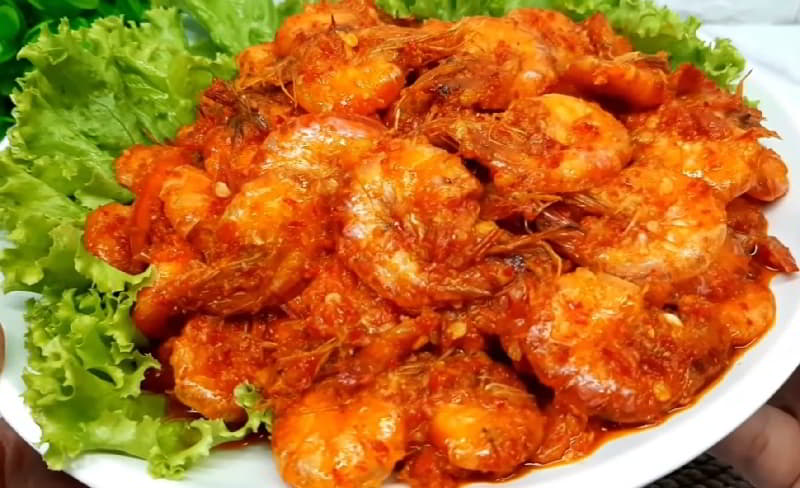
Udang balado represents a zesty and spicy shrimp dish prevalent in Indonesian cuisine. This flavorful creation involves stir-frying shrimp, whether peeled or unpeeled, in a tantalizing sambal paste using a modest amount of cooking oil. The bumbu, or spice mixture, incorporates shallot, shrimp paste, turmeric, garlic, galangal, candlenut, ginger, and red chili pepper. These ingredients are meticulously ground with salt and water. To enhance the aromatic profile, bruised lemongrass, daun salam (Indonesian bay leaf), and citrus leaf are added, all stir-fried in palm or coconut oil. The cleaned shrimp, whether peeled or unpeeled, are then introduced and stir-fried until thoroughly cooked. Variations may include additional ingredients such as quail eggs, tofu, green beans, fried diced potato, or green stinky beans, contributing to the rich and diverse tapestry of this Indonesian culinary delight.
Kalio
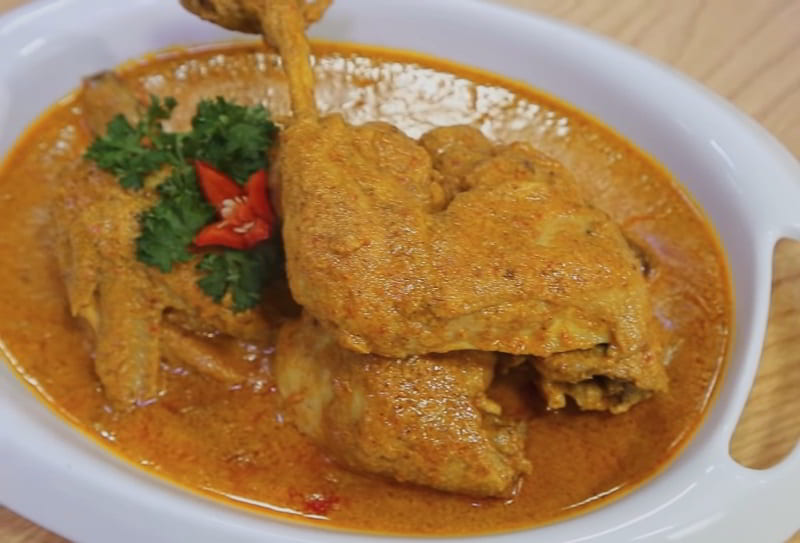
Kalio, an Indonesian rendition similar to rendang, undergoes a shorter cooking duration, retaining a significant amount of coconut milk liquid. Distinguished by its abundant sauce, enriched with spicy oil from the partially evaporated coconut milk, Kalio presents a flavorful companion to steamed rice. Many rendang variations served abroad align more closely with kalio or the wet rendition of rendang. When stored at room temperature, kalio maintains its quality for less than a week. Notably, kalio exhibits a light golden-brown color, distinguishing it from the drier texture and darker hue associated with traditional rendang. This variant of the renowned Indonesian dish showcases the diversity within the rendang family, offering a palatable and aromatic experience with its distinctive coconut-infused sauce.
Crab in Padang Sauce
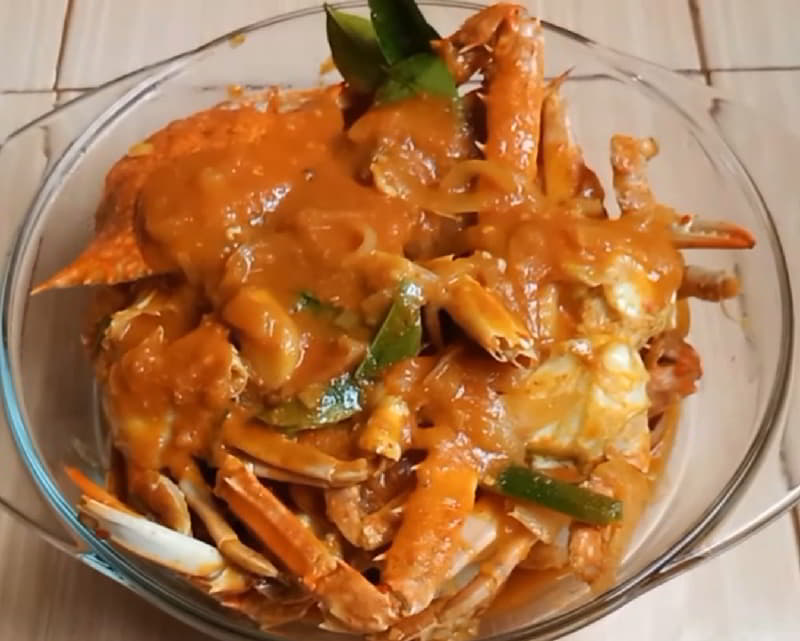
Crab in Padang sauce, an enticing and iconic dish originating from Indonesia's Padang region, promises a mouthwatering experience. The preparation involves boiling crabs until they are partially cooked and then cutting them into pieces. The water used in this process becomes the base for the flavorful crab broth. The bumbu, a blend of ground spices, includes garlic, candlenut, shallot, turmeric, bird's eye pepper, ginger, and red chili pepper. This aromatic spice paste is briefly stir-fried in palm oil with salam leaf (Indonesian bay leaf), chopped onion, and kaffir lime leaf. The crab pieces are combined with the stir-fried spice paste, crab broth, chili sauce, scallion, oyster sauce, salt, tomato ketchup, and pepper. The sauce is further enriched by thickening it with beaten eggs, resulting in a savory, hot, and spicy Padang sauce crab—a delightful dish that exemplifies the culinary prowess of the Padang region.
Soto Padang
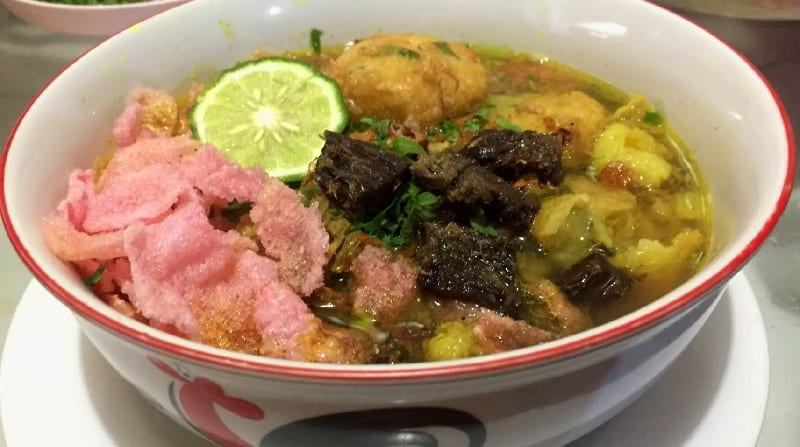
Soto Padang, a distinct variety of clear, non-coconut milk-based soto, is renowned for its composition featuring beef, onions, potatoes, and white vermicelli noodles. Originating from West Sumatra, Indonesia, this culinary specialty embodies the region's rich flavors. The meat in Soto Padang can either be boiled and sliced or fried to a crispy texture. Potatoes are boiled, seasoned, shaped into small patties, and then fried. Individual servings comprise potatoes, rice vermicelli, and meat, and often complemented by a boiled egg before the addition of flavorful broth. Garnishes include sliced celery, scallions, and fried shallots, enhancing the overall presentation. Particularly popular for breakfast in Padang City, Soto Padang is occasionally accompanied by creamed egg tea named teh talua, offering a delightful and culturally significant start to the day.
Keripik Sanjai
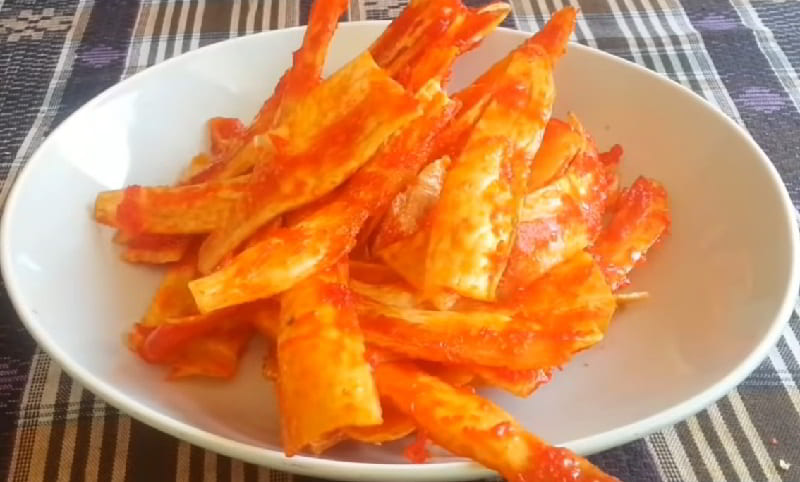
Keripik Sanjai is a distinctive Minangkabau cassava chip hailing from West Sumatra, Indonesia. Crafted from thinly sliced cassava, these chips undergo a deep-frying process in generous amounts of coconut oil until achieving a delightful crispiness. While commonly known as keripik singkong in Indonesia, the Minang version stands out as one of the most popular renditions of this cassava snack across the country. Notably, the sweet, hot, and spicy variant, Keripik Sanjai Balado, has earned acclaim as the most renowned among the diverse offerings. Its unique combination of flavors, blending sweetness, heat, and spice, adds an extra layer of distinction to the already cherished keripik sanjai, making it a favored and iconic snack in the culinary landscape of Indonesia.
Kue Pinyaram
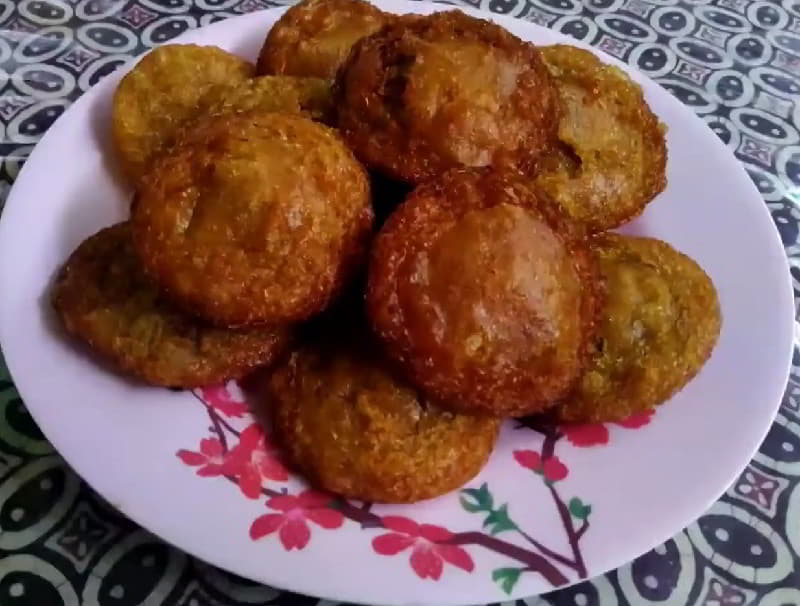
Kue Pinyaram stands as a delightful and distinctive dish within Padang cuisine, Indonesia. This unique treat is crafted from a blend of white rice flour, white sugar or palm sugar, or black rice, combined with coconut milk. The preparation method parallels that of cooking pancakes, creating a familiar yet uniquely Indonesian culinary experience. The careful combination of sweeteners, rice flour, and coconut milk contributes to the rich and flavorful profile of Kue Pinyaram. This delectable treat showcases the ingenuity of Padang cuisine, offering a delightful fusion of sweetness and coconut-infused goodness, making it a cherished and unique addition to the culinary repertoire in Indonesia.





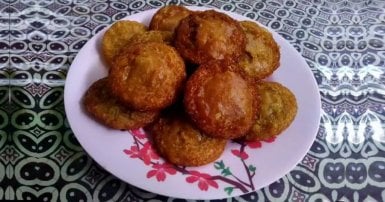
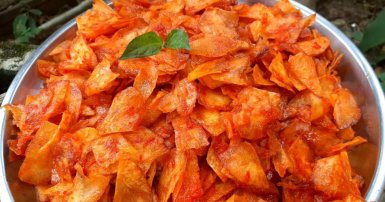
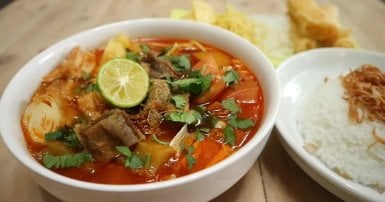

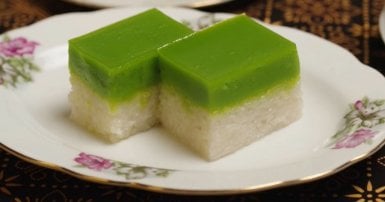
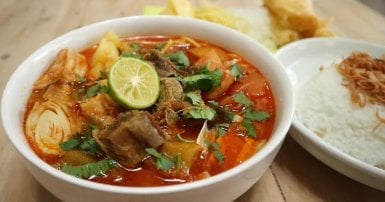
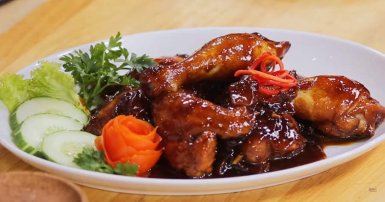

-1709813013.jpg)


